
Testimonial from Mr Robert Blake ( UK )
Touring in the country, when Bhutan closed the Visa 😱 & all flights ✈️ due to COVID-19 🦠 situation in the World 🌍
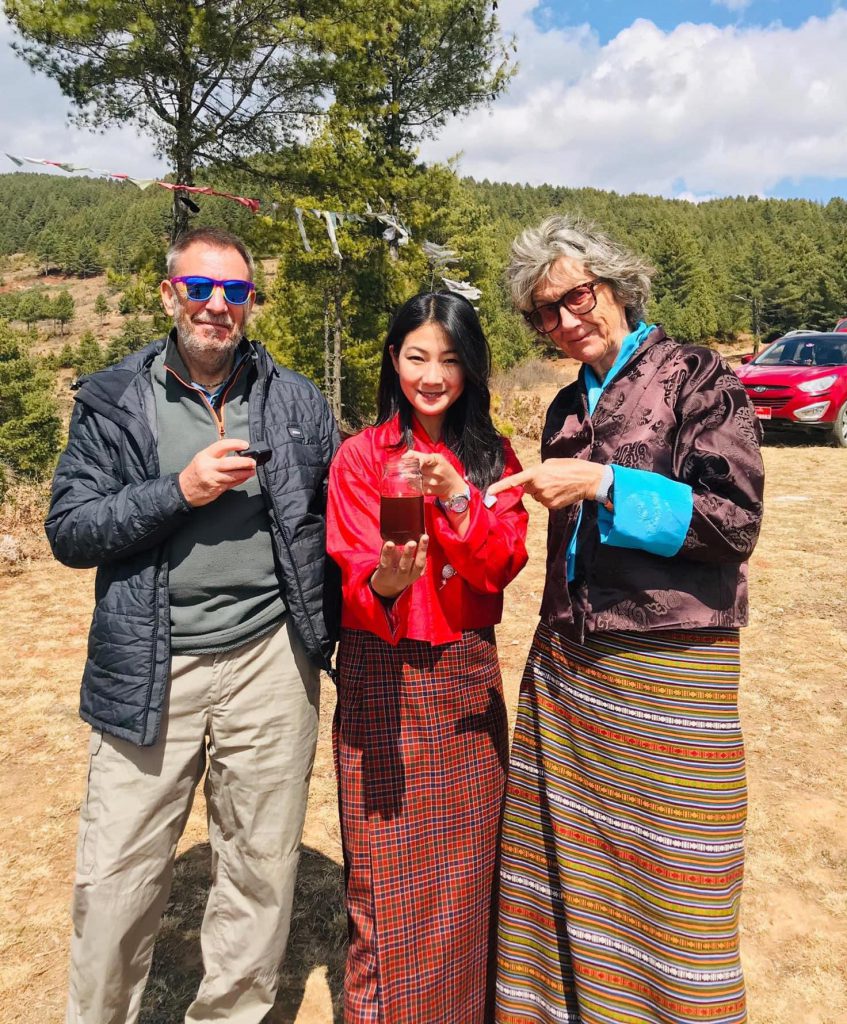
” THE MOST AMAZING TOUR AGENCY! 💕“
” Yelha organised our personalised 14 day trip to Bhutan. Through our lovely contact Samdup (Yelha Bhutan Tours Manager ) , every tiny detail was perfectly organised. He kept in touch up to the last minute with support and suggestions.
Met at the airport by guide Chimmi and driver Sangay, who couldn’t do enough for us throughout our trip.
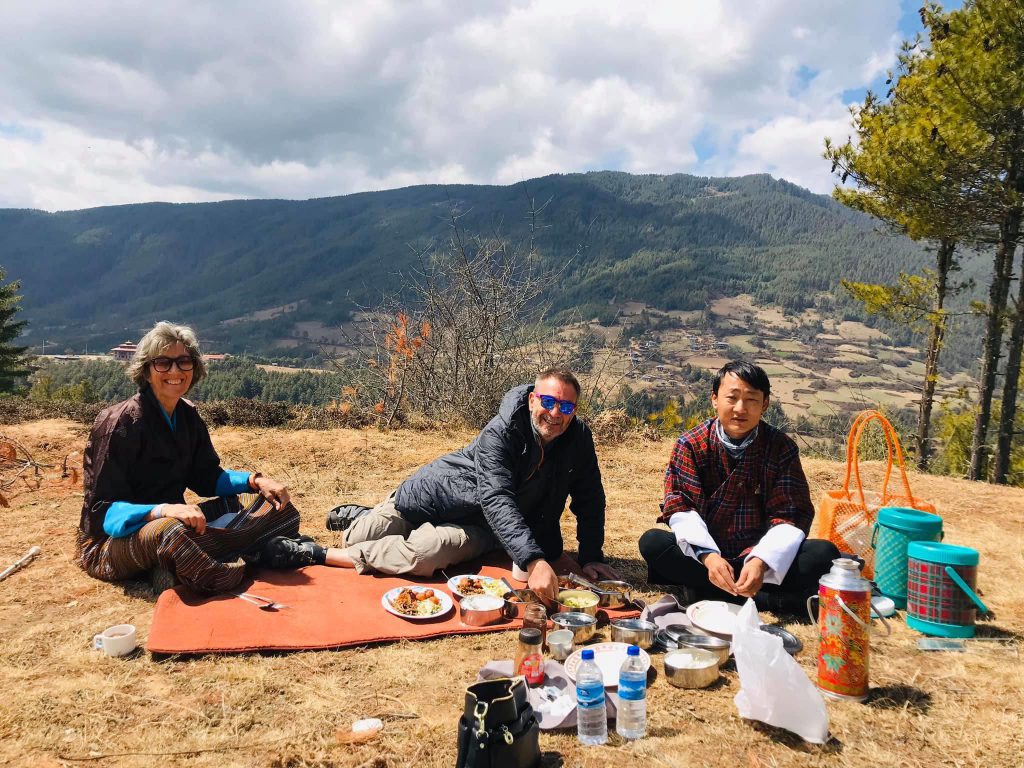
The program was amazing, and we loved every minute. The first disater – all ATMs and credit card machines in the country stopped working for an indeterminate period!
No problem – Yelha just lent us cash and asked us to repay by transfer when we got home!
Then the coronavirus hit, and restrictions were put in place for tourists. No problem – Chimmi and Sangay founds solutions to everything.

Then our return flight was cancelled – no problem, Samdup ( Yelha Bhutan Tours Manager ) managed to get us the last 2 seats on an earlier flight!
And we still managed to climb to Tiger’s Nest on our last day!
We cannot recommend Yelha and their staff highly enough. Professional, helpful, and prepared to resolve every problem.
We are going back again next year after coronavirus! “
……………………………………………………………………..
Departure from Bhutan on 14th March 2020 ( 12 Days Bhutan tour, 2 days before their actual departure since all fight were being shut down )
Every year this amazing cycling adventure is held on September.
Registration open for this years adventure, which will be held on September 7th, 2020.
Regarded as one of the toughest cycling race in the world, the race takes the participants across 4 mountain passes & 255 kms , all the way from Bumthang to the capital, Thimphu. The race commences from 2 am.
His Royal Highness Prince Jigyel Ugyen Wangchuck, president of the Bhutan Olympic Committee, started the Tour of the Dragon competition, billed as “the toughest one-day mountain bike race in the world.”
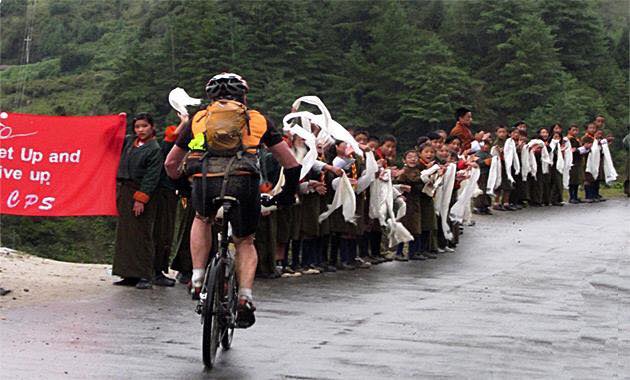
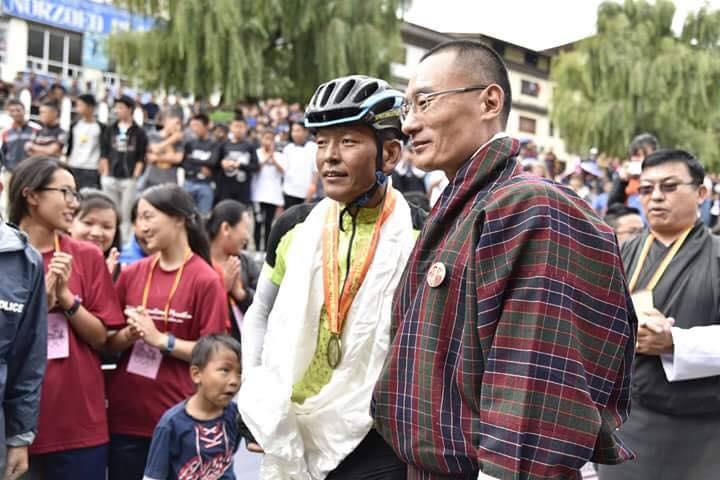
Cyclists will pass through the stunning rural countryside and villages of this tiny Himalayan Kingdom, sometimes known as the ‘Last Shangri La’.
The race is a great chance to discover the geographical and cultural wonders of Bhutan.
TOUR OF THE DRAGON is not a road bike race or a classic mountain bike race, nor it is a gravel grinder, because it doesn’t fit into any of the categories defined by the International Cycling Union. Since the distance of the race is 200+ kms, we would categorize it as an ultra-marathon mountain bike race on roads that happen to be extremely challenging.
National Registration Fee : Nu. 7,000/-
SAARC Registration Fee : USD 165/-
Expat Registration Fee : USD 165/-
International Registration Fee: USD 250/-
DRAGON’S FURY is another shorter cycling adventure on the same day.
Dragon’s Fury race was inaugurated in the year 2015 to celebrate the 60th Birth Anniversary of His Majesty, the 4th Druk Gyalpo, and therefore the distance of the race is 60 kms. The race starts in Messina at an altitude of 1410 m (4625 ft), travels up to Dochula at 3150 m (10,330 ft), then is all downhill until the Changlingmethnag parking finish.
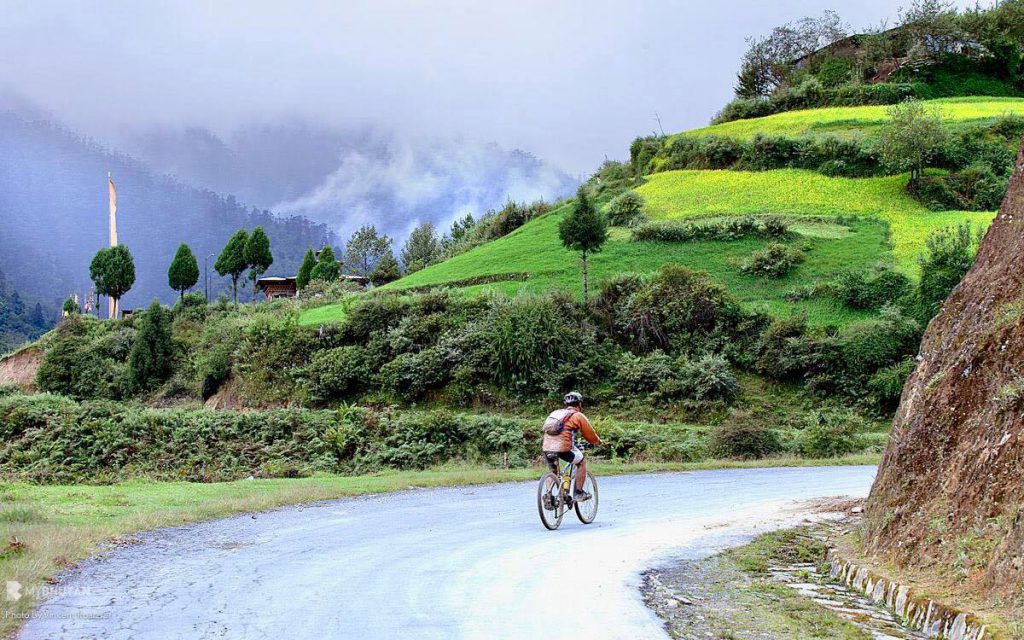
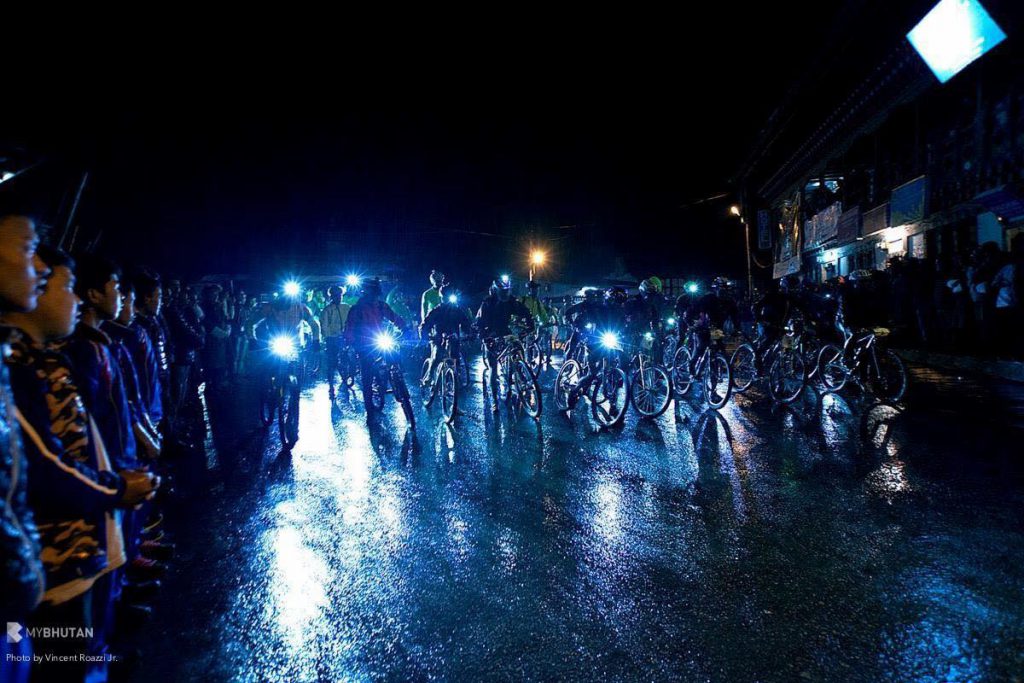
National Registration Fee : Nu. 2,000/-
SAARC Registration Fee : USD 35/-
Expat Registration Fee : USD 35/-
International Registration Fee: USD 100/-
* The Tour of the Dragon starts in Bumthang, central Bhutan at 2610m, (8560 ft).
* Pass through some of the highest mountain roads: Kiki La at 2870m (9420 ft); Gaytsha at 2950m (9680ft); Yotongla at 3430m (11250 ft); Trongsa at 2150m, (7050ft); Chendebji village 2430m (7970 ft), Pelela 3430m (11250 ft); Dochula at 3150m (10330 ft) and end in Thimphu at 2330m (7640ft).
* During the ride through the five major districts of the 20 districts in Bhutan, riders will witness excellent views on the never ending winding roads, ride close to imposing ancient fortresses (Dzongs), encounter villages settlements, bountiful extensive pine and mixed forests and farm fields.
* At Tshangkha it passes the headquarters of the Jigme Singye Wangchuk National Park.
* Chendebji Chorten, Built in the style of the great Bodhanath Stupa of Nepal, and the Chendebji village (2430m, 7970 ft).
* The Wangdue Phodrang and Punakha Valley.
* The majestic Druk Wangyel Chortens (108 stupas) at Dochula 3150m (10330ft) are a site to see supplemented by greater views of the highest mountain peaks in Bhutan like the Jomolhari 7326 m (24035 ft), Jichu Drake 6794 m (22290 ft), Gangkar Puensum 7570 m (24,840 ft)

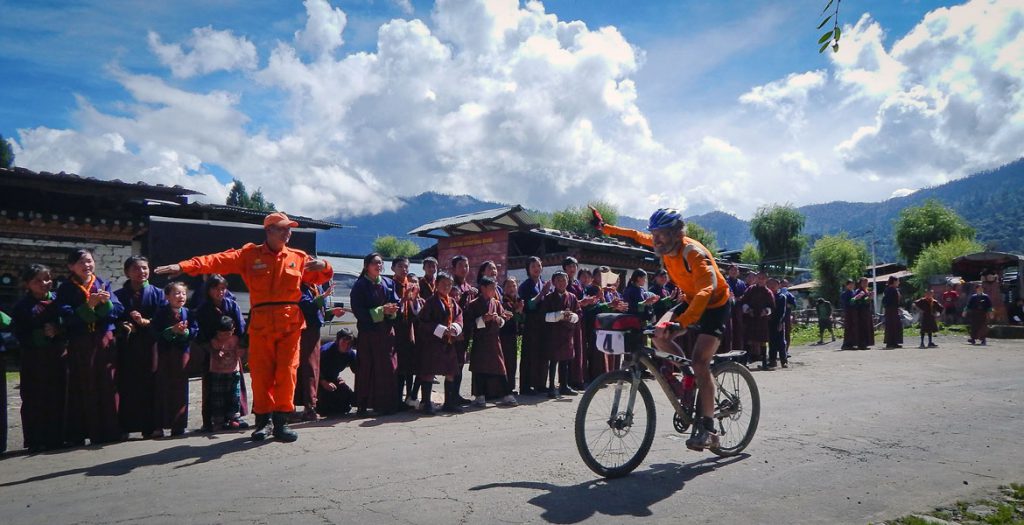
5th September, 2020 [Saturday]
12:00 AM Wake-up call
1:00 AM Report to start area, biking inspection and light breakfast for participants
2:00 AM RACE START (Flag off by Dasho Dzongdag)
3:00 AM Every rider is expected to cross Kiki La
7:30 AM Riders should cross Tshangkha by this time
9:00 AM Reach Chendepji
11:00 AM Reach Pele La
1:30 PM Riders should cross Wangdue check post
6:00 PM Final cut-off time at Dochula Pass. If you make it to Dochula by 6:00 PM you are allowed to continue to the finish line.
7:00 PM Awards ceremony at the Changlingmethang Parking, Thimphu
All awards will be given at the awards ceremony on the 5th of September, 2020 at 7:00 PM onward at Changlingmethang Parking, Thimphu.
Tour of the Dragon cash purse and additional prizes will be offered to participants as follows:
1st Nu. 150,000/-
2nd Nu. 95,000/-
3rd Nu. 75,000/-
4th Gifts worth: Nu. 10,000/-
5th Gifts worth: Nu. 10,000/-
6th Gifts worth: Nu. 5,000/-
7th Gifts worth: Nu. 3,000/-
8th Gifts worth: Nu. 3,000/-
9th Gifts worth: Nu. 3,000/-
10th Gifts worth: Nu. 3,000/-
1st Nu. 150,000/-
2nd Nu. 95,000/-
3rd Nu. 75,000/-
4th Gifts worth: Nu. 10,000/-
5th Gifts worth: Nu. 10,000/-
Youngest rider to complete the race [must cross before cut-off time]: Nu. 10,000/-
Eldest rider to complete the race [must cross before cut-off time]: Nu. 10,000/-
Kingdom of Bhutan was one of the first countries to response to the COVID-19 outbreak in the world by closing the entry of tourist from March 6th 2020.
Here are some special details about the changes in Tourism policy due to the Coronavirus (COVID-19)
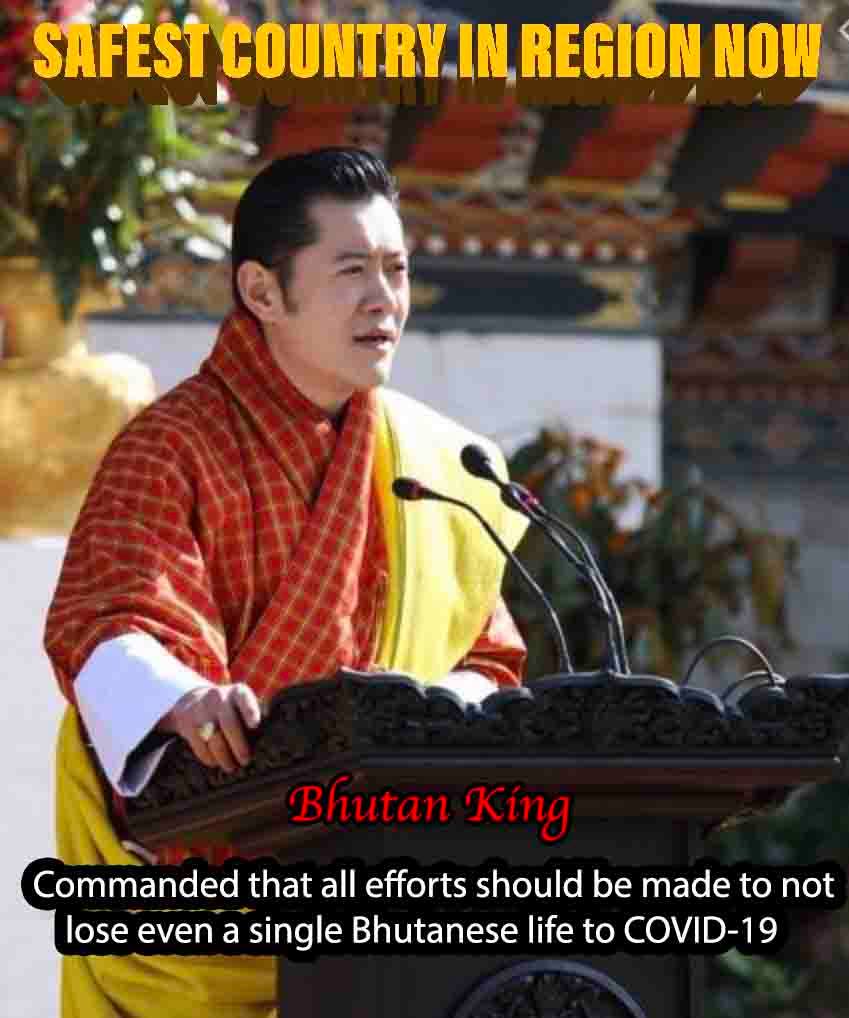
The total number of COVID-19 positive cases in Bhutan is now 66 (All the cases are imported and 21 people have recovered as of now )
6 March: Bhutan confirmed its first COVID-19 case, a 76-year-old US male who travelled to the country via India. His 59-year old partner of the American tourist tested positive for COVID-19, after 14 days into quarantine, 19 days after entering Bhutan and 28 days after her first contact with the index case. (Both have recovered as of now )
25 March: A student who had returned from the United Kingdom was found to be positive for COVID-19, the third case in the country. (recovered as of now)
29 March: According to the Ministry of Health, a returning student in the quarantine facility tested positive. The patient was moved to the isolation ward in Thimphu.(recovered as of now)
1 April: A Bhutanese student who had been studying in the US, and was under facility quarantine in Thimphu, has tested positive for Coronavirus. She has been moved to the isolation centre and is reported to be in a stable condition. This is the 5th case of COVID-19 detected in the country.(recovered as of now)
Since 6th March all tourist visa has been restricted and no future date has been announced to open restriction as of now.
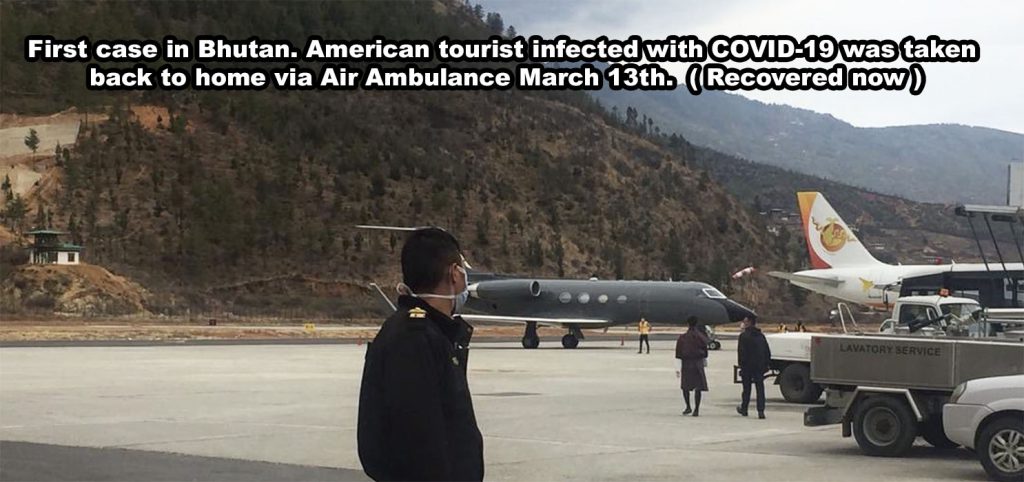
This is to inform that the whole tour cost including the visa fees received by Yelha Bhutan Tours can be refunded or tourist can postpond as per wishes of the clients to any period after Bhutan opens for Tourism.
We would like to request the tourist to post pond the tour rather than cancel as cancellation of airfare, tours can be heavy paper work and also the inward and out ward bank transfer charges will cost more.

Rest assure la your payments are safely in our Government bank ‘Bhutan national bank’, Tourism council of Bhutan account and with the airlines.
If the clients wishes to cancel the air ticket and tour, The bank transfer charges and any administrative charges will be met from the refund amount and will be refunded in the same account via which our Bhutan bank got the transfer.
Bhutan has very strict tourism policy and the tourist welfare are protected, therefore tourist need not worry about their payments which are already transferred to Bhutan.
Yelha Bhutan Tour is a reputed & trusted company in Bhutan therefore you are in good hands la.
Due to the quick response of Bhutan.Bhutan is currently one of the safest country in the region from the virus and the kingdom was already prepared.
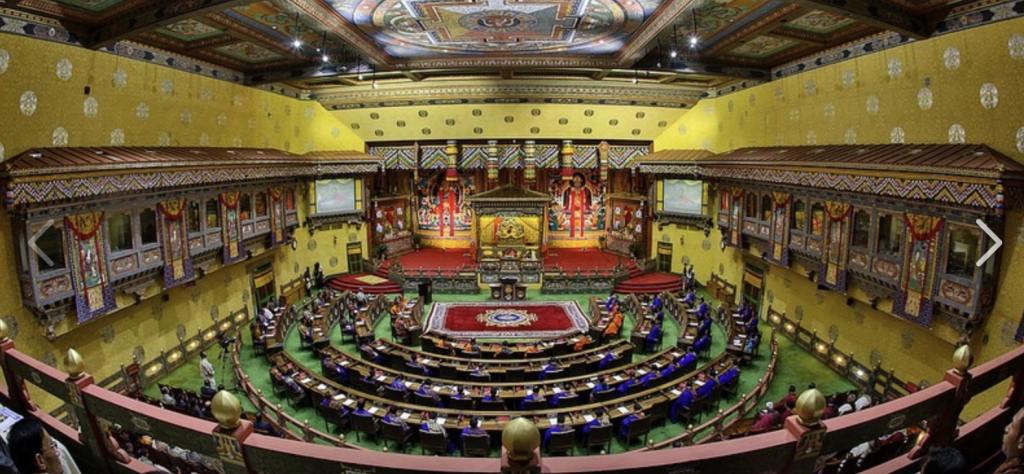
Bhutan is currently doing well in the face of COVID-19 threat. Bhutan has no internal transmission of COVID-19 case as was of now, and all efforts are being made to keep it this way.
Bhutan is not under any lock down but all the entry and exit gate, flights are closed for now and social distancing is done by every citizens.
★ Bhutan geographically by the natural barriers called the Himalayas, it is difficult to get into the kingdom and as all flight are stopped ,except for relief flight and the southern borders with India are shut. No one can get into, or get out of Bhutan except for relief operations.
★The population of Bhutan is 807,610 (2017),and almost every Bhutanese is staying at home and are keeping social distancing.
★ His Majesty is personally traveling thought out the country to check and prepare for any emergency. 🙏 His Majesty 👑 has commanded that all efforts should be made to not lose even a single Bhutanese life to COVID-19.
★21 days mandatory quarantine for any one coming into the kingdom. The facilities are all taken care by the Royal Government of Bhutan.
★All Bhutan Hospitals, medical teams and many new medical camps were on standby and fully prepared from March 6th 2020.
★All the resorts , hotels in country volunteered and gave their property to all incoming travelers for quarantine facilities.
★ Bhutanese residing outside neighboring borders were called back in and are given Free housing, rations, health care etc.
★ All public gatherings , night clubs, large religious gathering, picnics, celebrations are restricted and closed.
★The whole citizen of country listen to His Majesty, Prime Ministers and Health Ministry advices.
★Every Bhutanese citizen are doing their parts from charity to volunteering.
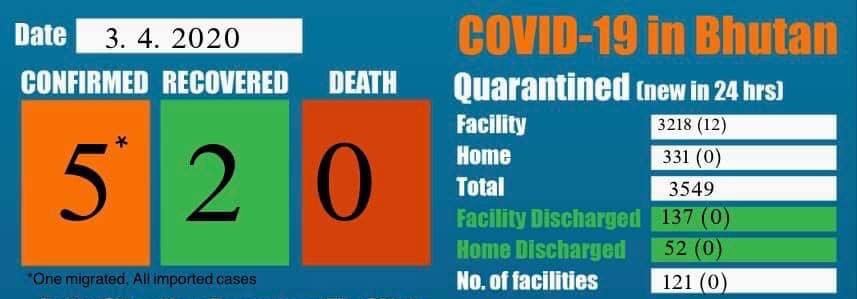
From childhood we are taught “ Driglam Namzha“ … It’s our Centuries old Tradition etiquette.
… It contains Three disciplines: Physical Discipline , verbal Discipline, and mental/ inner mind Discipline..
Highlight: Lavish Bhutan wedding with sacred religious traditional blessing, photography, Bhutanese traditional costumes, blessing by buddhist masters, special ceremony in a sacred ancient temple.Bhutan tour and wedding photography.
Description : Bhutan has a unique cultural heritage which has its roots in Buddhism. The Bhutanese people have successfully kept its culture and traditions intact until this day.
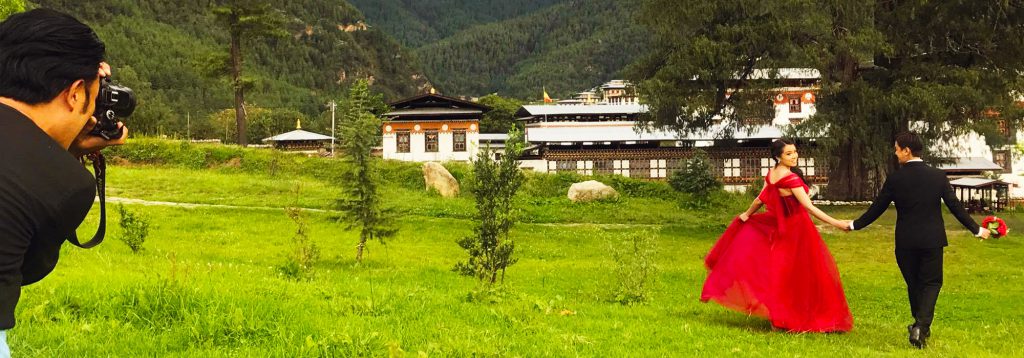
Spirituality exists in everyday life of Bhutanese people, therefore in Bhutan a wedding is a celestial union of mind, body and soul of two people. Bhutan has became one of the most popular wedding country now, with celebrities and some of the most popular people visiting Bhutan to have their blessed wedding vows in Bhutan.
One of the most renowned person who got proposed and got married in Bhutan is Dew Aung San Su kyi at Tigers nest temple, Hong kong celebrities Carina Lau and Tony Leung Chiu Wai and the list goes on.
Wedding Location : Wedding can be an ancient temple temple ( 1000 year sold sacred temple/shrine ), Resort in or 300 years old heritage Bhutanese home.
Location tours: Thimphu (capital ), Paro valley and Punakha valley.
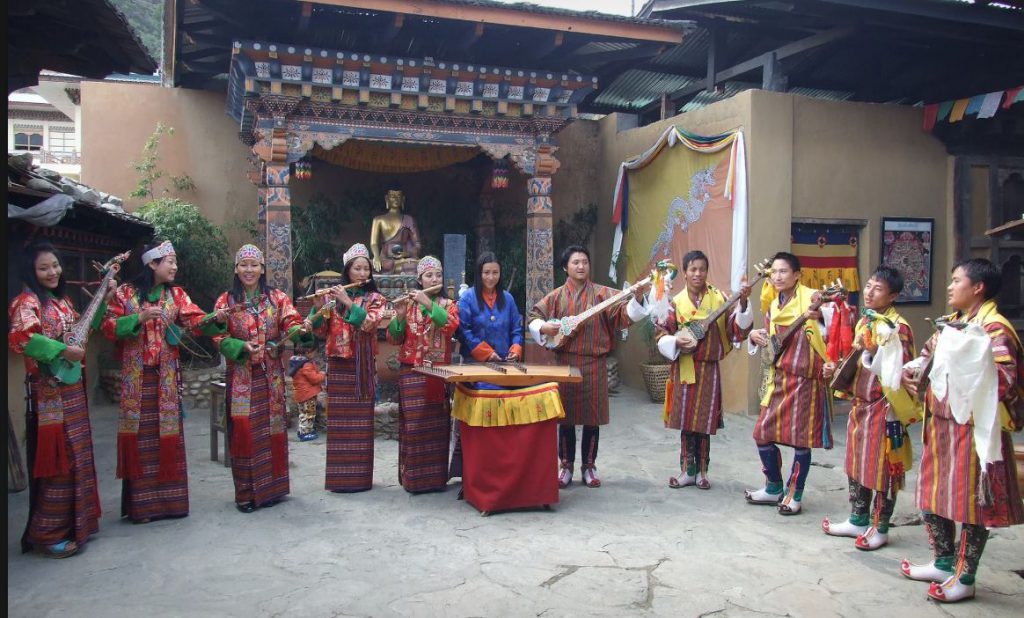
Fly into Paro, the great snow-capped peaks of the inner Himalayas rise up to the heavens can be seen during clear weather. As the plane approaches Bhutan, if you look down farmhouses as dots on the hillsides can be seen.
As the aircraft enters the Paro valley, you will see Paro Dzong on the hillside overlooking the Paro Chu (river), with Ta Dzong, formerly a watch tower and now the National Museum, above it.
You will be received by the representative of Bhutan, who will be your Bhutan travel guide throughout your tour.
Visit the following:
Overnight at a hotel in Thimphu.
After breakfast Thimphu sightseeing’s includes the following:
After 5 PM we will visit the Tashichho Dzong, “the fortress of the glorious religion”.
This is the centre of government and religion, site of the monarch’s throne room and seat of the Je Khenpo or Chief Abbot. Built in 1641 by the political and religious unifier of Bhutan, Shabdrung Ngawang Namgyal, it was reconstructed in the 1960s in traditional Bhutanese manner, without nails or architectural plan.
Night halt in Thimphu.
Today we will dress up the couple in exotic Bhutanese costumes and prepare them for the wedding. We will then drive to one of the holiest shrines in Thimphu and make the vow arrangements;
The Head monk will preside over the rituals and offer the scarves to the couples. “Bhutanese wedding is much more than an exchange of vows and rings.
It includes a number of religious rites performed by Buddhist monks and lamas. This represents the importance of the bond between two people. This ceremony is also used for renewing marriage vows.
The actual wedding ceremony and blessings for a lifetime of love and happiness takes place at home. This is followed by visits to sacred temples to make more offerings.
Lhabsang purification : The ceremony begins with a ritual in the morning performed by the monks before arriving at the temple.
Butter lamp : Butter lamps are lit inside the temple as an offering to the deities. Before lighting the lamps the bride and groom have to prostate six times; three times to the head monk and three times to the main alter.
Thrisor : Thrisor is a rite of purification and cleansing that is performed by the head monk at the temple. This will clear your bodies, minds, and speech of all past sins
During the ceremony, monks recite mantras and offer fumigation outside the temple to please the local deities. Bhutanese believe that only if the local deities are pleased we can have their blessing and enjoy good health and wealth.
The fumigation is to please their sense of smell and grains added to the fumigation are to quell their hunger. Inside the temple butter lamps are lit and prostrations done. The butter lamps are an offering of light to deities and the most common means of increasing merit.
Changphoe : The offering to the gods and deities in a form of liquor. After an offering is made to the deities, the liquor (ara) will then be served to the bride and the groom in a traditional wooden phop. (cup), which they will share. This symbolises the faith and everlasting bond the husband and the wife will share for the rest of their lives.
Tsephamey Choko : Tsephamey Choko is a long ritual that is performed in honor of Tsepamey; the God of longevity. It is performed by the head monk to give you a long and happy life together. It is followed by the bride and groom being blessed by the head monk.
Zhugdrey Phunsum Tshogpa : Food and drinks are now offered to deities and the people at the ceremony. This represents unity, wealth, and glory, and in no way should be refused. Normally oranges are used, as they are attractive, taste good, and represent unity. As well, the actual fruit is protected under a layer of skin, which symbolizes security and protection.
Dhar Nayanga : This is the last part of a Bhutanese wedding. Five colored scarves are given to the bride and groom as well as wishes for a happy, prosperous, and everlasting marriage
In addition to these traditions, the bride and groom should be wearing traditional Bhutanese costumes to show respect for this sacred ceremony. This means that the bride will wear a Kira and the groom will wear a Gho.
Option: After the wedding we will drive to the Bhutan post office and take photo to make Stamps of the wedding, which us usable in any part of the world.
We will be driving to some of the best spots in Capital (Temples, mountain side and other beautiful landscapes to take photo of the couple who will be dressed colorfully.
In the evening we will have dinner in one of the Heritage Farmhouse/or simply Bhutan restaurant in Thimphu and also a private 1 hour cultural program will be organized for the married couple.
The beautiful day will finish with great Bhutanese authentic food and traditional Bhutanese Ara/Wine.
Overnight in Thimphu.
Sightseeing and Photo shoot at the Dochula Mountain pass (Half day photo shoot )
After breakfast, travel to Punakha through Dochula Pass (3,088m/10,130ft). If you have a clear sky, the view of the Himalayan Mountain ranges spectacular and you can even see the Gasa Dzong as a white dot in the horizon.
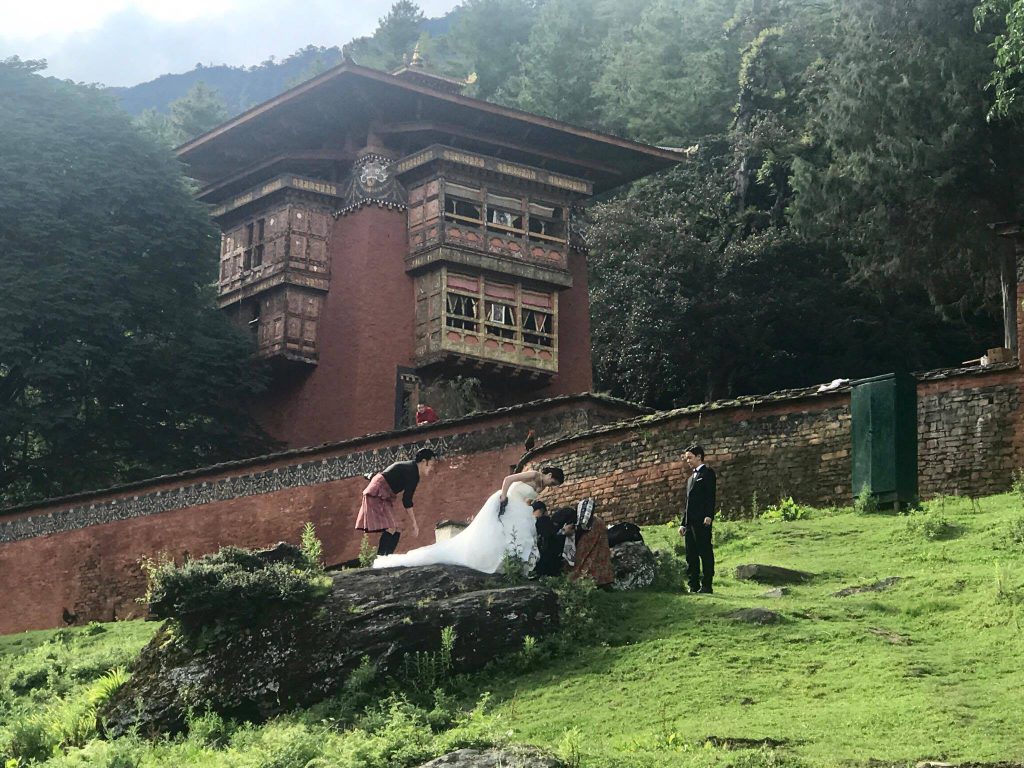
Visit the beautiful 108 chortens built on the hill by Her Majesty Ashi Dorji Wangmo for the security and well being of His Majesty the King of Bhutan.
Travel onto Punakha, the old capital of Bhutan and presently the winter residence of the central monk body.
Visit the Punakha Dzong, located on the island of the Pho – Chu (male) river and the Mochu (female) river. Evening, walk through the Metshina Village and take a 20 minute walk through the rice fields to the Devine Madman’s Monastery-Chhimi Lhakhang, famously known for its fertility shrine, where one can receive a special fertility blessing .
Overnight at a hotel in Wangdue/Punakha.
After breakfast, we will drive to Paro. Visit Kichu temple, one of the 108 temples built in the 7th century by the Tibetan King Songsten Gampo.
The story goes that a giant demon lay across the whole area of Tibet and the Himalayas and was preventing the spread of Buddhism. To overcome her King Songtsen Gampo decided to build 108 temples, which would be placed on all the points of her body. Of these 108 temples, 12 were built in accordance with precise plans.
Thus, it happened that in about the year 638 AD the temple of Jokhang in Lhasa was built over the very heart of the demon.
In the afternoon stop in Paro town and visit some of the popular coffer house and relax.
Night halt in Paro
After breakfast, drive up to the base camp of Taktsang and then hike up to the most famous Monastery in the entire kingdom of Bhutan perched on the edge of a steep cliff, about 900 meters above Paro Valley. The hike to the viewpoint will take about an hour and it will take 2 hours to the monastery.
Lunch at the viewpoint or at Paro town. Later sightseeing in town and Kichu Lhakhang. The 1300 years old Jo Jampa Temple. Overnight at a hotel in Paro.
In the morning, your tour guide from Yelha Bhutan Tours & Travels (local Bhutan travel agent) will escort you to Paro International Airport for your
departure.
—————————————————
Duration: 11 Days, 10 Nights.
Locations: Thimphu, Paro, Punakha and Wangduephodrang, Trongsa and Bumthang.
Type of Tour: Cultural tour/Adventure.
Highlight: Visits to the important cultural and historic sites. Visit to some of the sacred temples in Bhutan. You will be going to some of the must beautiful valleys of Bhutan like-Bumthang, Phobjikha, punakha valley,Central Bhutan is one of the most beautiful and sacred valleys of Bhutan. wear Bhutan traditional costumes, visit to pristine valley of URA village, blessing in sacred temples, hiking in the pristine forest of ura, picnic lunch at some of the most beautiful location in Bhutan, maximum sightseeing tours etc
• DAY 01: ARRIVE PARO- NIGHT IN THIMPHU
• DAY 02: THIMPHU
• DAY 03: THIMPHU-PHOBJIKHA
• DAY 04: PHOBJIKHA-TRONGSA
• DAY 05: TRONGSA-BUMTHANG
• DAY 06: BUMTHANG-URA
• DAY 07: BUMTHANG
• DAY 08: BUMTHANG-PUNAKHA
• DAY 09: PUNAKHA-PARO
• DAY 10: PARO VALLEY
• DAY 11: FAREWELL
Fly into Paro by Druk Air, Bhutan’s National Airline. The great snow-capped peaks of the inner Himalayas rise up to the heavens can be seen during clear weather. As the plane approaches Bhutan, if you look down farmhouses as dots on the hillsides can be seen.
As the aircraft enters the Paro valley, you will see Paro Dzong on the hillside overlooking the Paro Chu (river), with Ta Dzong, formerly a watchtower and now the National Museum, above it. You will be received by the representative of Yelha Bhutan Tours and Travels (Bhutan tour operator) who will be your Bhutan travel guide throughout your tour.
After meeting with the guide and driver then drive to Thimphu, the capital of Bhutan. Check into the hotel and rest for a while and then visit Buddha Dordenma (the larges Buddha Statue at Kuenselphodrang), Memorial stupa, Tashi Chhodzong and the stroll through the town in the evening.
After the breakfast, we will visit Institute of Zorig Chusum (Institute of 13 Arts and Crafts) where students undergo 6-year training course in Bhutan’s 13 traditional arts and crafts.
Changzamtog National Weaving Centre, Takin Preserve which houses the national animal- takin which is found only in Bhutan. Takin is an extremely rare member of goat family.
Then visit Changangkha temple and end with Centenary Farmer’s Market where farmers sell their farm produces ( vegetables, fruits, cereals, spices, wild vegetable collections, livestock products and free interaction with local people who come shopping to this market, especially on weekends.
After breakfast drive to Gangtey and Phobjikha valley.
Phobjikha valley has been declared as the first eco-tourism
destination of Bhutan by the Royal Society for Protection of Nature (RSPN).
The valley falls under the Black Mountain Natural Park. Phobjikha valley is the winter home to rare and endangered black necked cranes (grus nigricllis), which migrate, in large flocks to Bhutan from Tibet &
Sikang, Yunnan and Tonkin in eastern China.
There are lots of other wild animals in the surrounding valleys like wild boar, barking deer, Himalayan, black bear, red fox, leopard and many species of birds. Overnight Phobjikha at Hotel.
We will go for a hike through the famous Gangtey natural trail, It starts from Gangtey Monastery and take around 1.5 hours. This is the most beautiful and shortest of the existing nature trails in Bhutan.
The trail hike starts from the mani (like Chhorten) stone wall to the north of the Ganagtey Gonpa and ends in Khewa Lhakhang. This hike which takes you though the pine forest and small bamboo plants provides a spectacular view of the Phobjikha Valley.
Overnight at Hotel in gangtey with beautiful view of the valley.
Today morning after breakfast we will visit the Nature Education center, the carpet factory and the Sacred Gangtey Monastery, which dominates the valley.
After Lunch, continue your journey towards Central Bhutan.
Overnight at Hotel in Trongsa with beautiful view of the valley.
Trongsa is the ancestral home of Bhutan’s Royal Family. Both the First and Second King ruled the Kingdom from this ancient seat.
All the Kings of Bhutan has to become Trongsa Penlop (Honorary post of Governor) prior to being crowned as the Druk Gyalpo (King of Bhutan). Trongsa Dzong (fort), one of the largest in the country was first built is 1648 and later enlarged many times.
Visit the state of art museum in Bhutan the Ta Dzong, This watchtower, which once guarded Trongsa Dzong from internal rebellion, stands on a promontory above the town. It was built by Chogyal Minjur Tempa, the 1st Governor of Trongsa in 1652.
A visit to this former watchtower provides visitors with an insight into the significance of Trongsa in Bhutan’s history. Today the Ta Dzong of Trongsa is the most fascinating museum of the nation.
From Trongsa the drive to Bumthang takes 2-3 hrs. Tales of the great Guru Padmasambhava dominates this holy valley.
A stop will be made on the way in the Chumey Valley where one can see girls weaving Yatha the traditional woolen material being used.
Overnight Bumthang.
Different from all the other valleys in Bhutan, Bumthang is very spacious and open ranging in altitude from 2,600m to 4,000m.
Whole day sightseeing in Bumthang, which is the most beautiful place in Bhutan and we normally say, “Switzerland of Bhutan”.
In the morning visit the Jakar Dzong. The fortress is now used as an administrative center of the valley and summer residence of monks.
Jambay lhakhang, built in the 7th century by the King Songtsen Goempo of Tibet. In his effort to propagate Buddhism he had a plan to build a total of 108 temples in Tibet and neighbouring kingdoms.
visit Kurjey Lhakhang (Kurjey means, “Body imprint”). The temple to the right was built by Minjur Tempa in 1652. It was built around the cave in which Guru Rinpoche meditated and left his body imprint.
Hike for 20 minutes and visit the Tamzhing temple. Tamzhing Lhündrup Monastery in Bumthang District in central Bhutan is a Nyingma gompa in Bhutan. Its temple and monastery are remarkable for their direct connection to the Bhutanese tertön and saint, Pema Lingpa and his tulkus.
Then visit small Bumthang town and take leisure time by walking through villages nearby.
Full day sightseeing drive further east towards Ura valley. Ura Valley is famous for one of the most unique and earliest settlements in Bhutan. Hike through the beautiful hill and forest of upper ura valley to the village.
Approx time 1 hour.
Lunch at the farm house with the villagers. Visit Ura Village and the Temple. Mingle around with local people and kids and take beautiful pictures.
Return to Jakar, Bumthang for Overnight.
DAY 08: Bumthang- Punakha
Today after breakfast we will drive to punakha valley with sightseeing en-route.
We will stop at certain places for tea/refreshments and drive slowly towards punakha valley.
We will visit the beautiful Punakha Dzong. Built strategically at the junction of Pho Chhu and Mo Chhu rivers in 1637, by Shabdrung Ngawang Namgyal to serve as the religious and administrative center of the region, Punakha Dzong has played an important role in Bhutan.
Punakha was the winter capital for over 300 years until the time of second King. Punakha Dzong, which dominates the whole area, was built in 1637 by Shabdrung Ngawang Namgyel, and established the central monastic body with 600 monks.
Overnight Punakha at Hotel.
Today, Punakha is still the home for Je Khempo (Chief Abbot) and the central monastic body. Punakha Dzong is one of the most impressive Dzong in the Kingdom.
In the morning we will visit the Chimi Lhakhang. The Chimi Lhakhang, situated on a hillock in the centre of the valley, is dedicated to Lama Drukpa Kuenley, who in the late 15th century used humor, songs and outrageous behavior to dramatize his teachings and due to this also known as “Divine Madman”. This temple is also known as the temple of fertility. Later we will drive to Paro valley.
Later drive to Paro for Overnight at Hotel.
Morning, hike up to the view point of “Taktsang”, popularly
known as Tiger’s Nest Monastery.
The climb up to the viewpoint will take around 1 ½ hours and from there you will enjoy a spectacular view of the monastery clinging to the side of the cliff. Stop for refreshment at the View Point Cafeteria. Then walk further up to the monastery which will take about 1 hour.
It is said that in the 8th century Guru Rinpoche flew on the back of a tigress from eastern Bhutan to this place and meditated in a cave here for 3 months. The principal Lhakhang (monastery) of the present
monastic complex dates from 1692. Taktsang was damaged severely by fire in 1998 but has now been fully restored to its former glory. After visiting the monastery, walk back down to the road on the way stop
for lunch at the view point cafeteria and then walk further down to the road point.
On the way, visit Kichu temple, one of the 108 temples built in the 7th century by the Tibetan Later visit King Songsten Gampo.
In the evening relax and overnight at a hotel in Paro
After breakfast at the hotel, transfer to the airport for the departure flight. Tashi Delek
Cordyceps is called as Dong chong xia cao 冬虫夏草 in Chinese, Yarsagumba in Tibetan and Bhutanese language and Đông trùng hạ thảo in Vietnamese.
Cordyceps Mushroom supplement comes from an Asian mushroom known as Cordyceps sinesis (C. sinesis) which sprouts from the body of dead caterpillar in the wild.
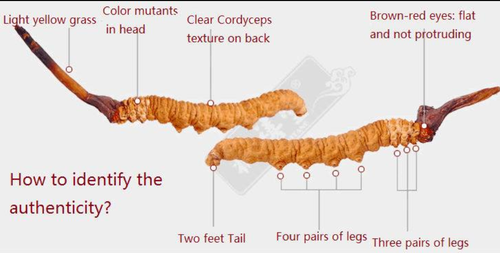
It is also known as the Himalayan Viagra “Yarsa gumba,” which translates as “winter worm, summer grass.
Cordyceps thrives only at altitudes above 3800 meters in the cold, grassy, alpine meadows on the mountainous Himalayan Plateau of Bhutan, India, Nepal, Tibet and the modern Chinese provinces of Sichuan, Gansu, Hubei, Zhejiang, Shanxi, Guizhon, Qinghai, and Yunnan
It can only be found in the mountainous regions above 11,000 feet in Tibet, Nepal and Bhutan. Every year the price of the cordyceps increased due to increase in demand. A high value cordycep cost USD$ 10,000- USD$50,000 per Kilo.
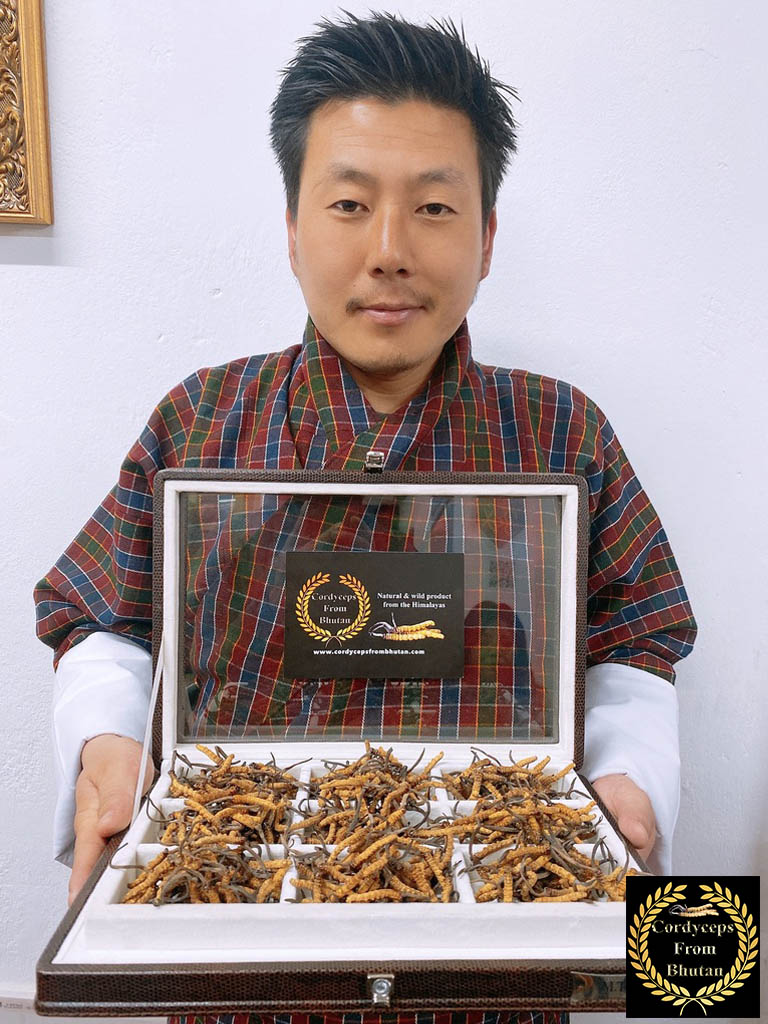
The fungus is the result of spores from C. sinensis entering the body of a live caterpillar while it is in the larval form of a large moth native to the region.
Upon infection from the spores, strands of filaments called “hyphae” begin to sprout from the spores that then lead to the death of the caterpillar.
The hyphae grow longer and more numerous and develop into a relatively large stalk-like fungal fruiting body that emerges from the insect’s carcass after having sapped the caterpillar’s body of all nutrients.
Cordyceps sinensis has been described as a medicine in old Chinese medical books and Tibetan medicine. It has been used as food, medicine, poison, and in spiritual mushroom practices in religious rituals across the world since at least 5000 BC.
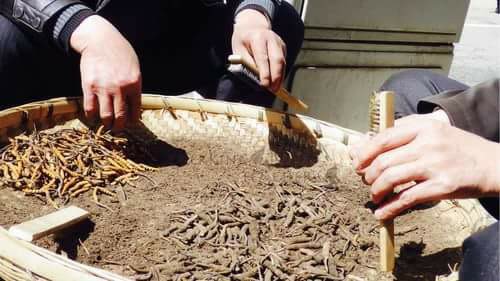
During the Beijing 1993 Olympics, the price of Cordyceps has skyrocketed. Rumour has it that Chinese government were buying up all the Cordyceps for their athletes.
It was found that there were no special training schemes or methods, but after each training session, every athlete would consume a special drink, which contained Cordyceps.
Traditionally, cordyceps has been used in the elderly population to improve weakness, impotence, and fatigue associated with aging.
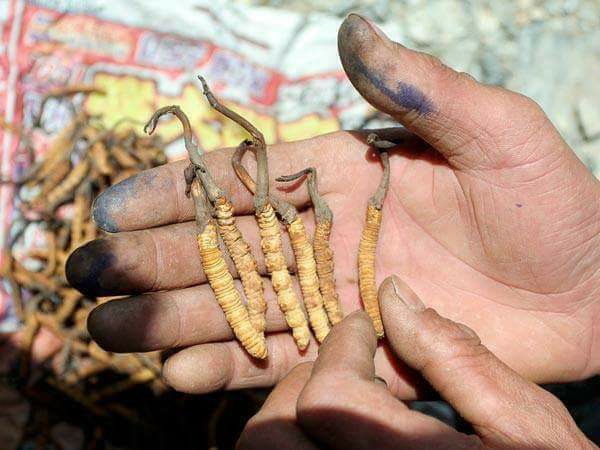
Improvements in self-reported symptoms have been described, as have increases in red blood cell superoxide dismutase activity and decreases in malondialdehyde levels.
Other antioxidant effects, hydroxyl radical scavenging activity, and decreases in lipid peroxidation are thought to be responsible for the antiaging effects, as well as effects on the adrenergic and dopamine systems. Increases in learning and memory have been shown in experiments.
Animal studies suggest cordyceps, particularly the polysaccharide extracts, and decreases blood glucose levels by improving glucose metabolism and enhancing insulin sensitivity.
Few clinical trials exist; however, 1 small (N = 20), randomized trial found that taking C. sinensis 3 g daily improved the blood sugar profile over placebo.
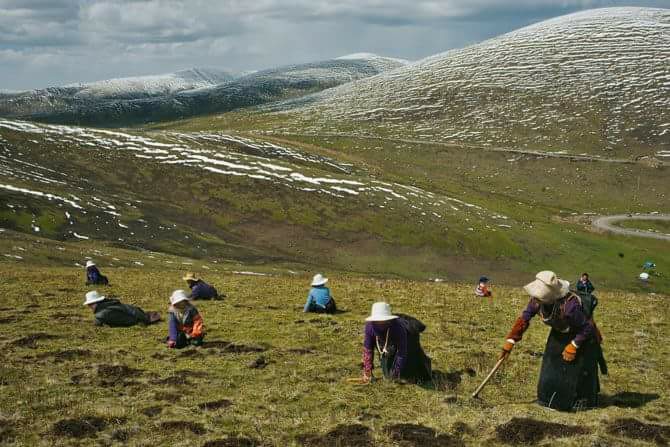
According to Memorial Sloan-Kettering Cancer Center (MSKCC), cordyceps has antitumor, radioprotective, and antidiabetic effects. MSKCC cites a study in which cordyceps made the cancer medication cisplatin more toxic to lung cancer cells, and confirms that cordyceps can also help infection-fighting lymphocytes live longer, increase levels of T helper cells, reduce tumor cell proliferation and boost the activity of natural killer cells.
Finally, the medical center reports that some studies have shown that cordyceps has caused cancer symptoms to improve, in addition to helping patients better tolerate the rigors of chemotherapy.
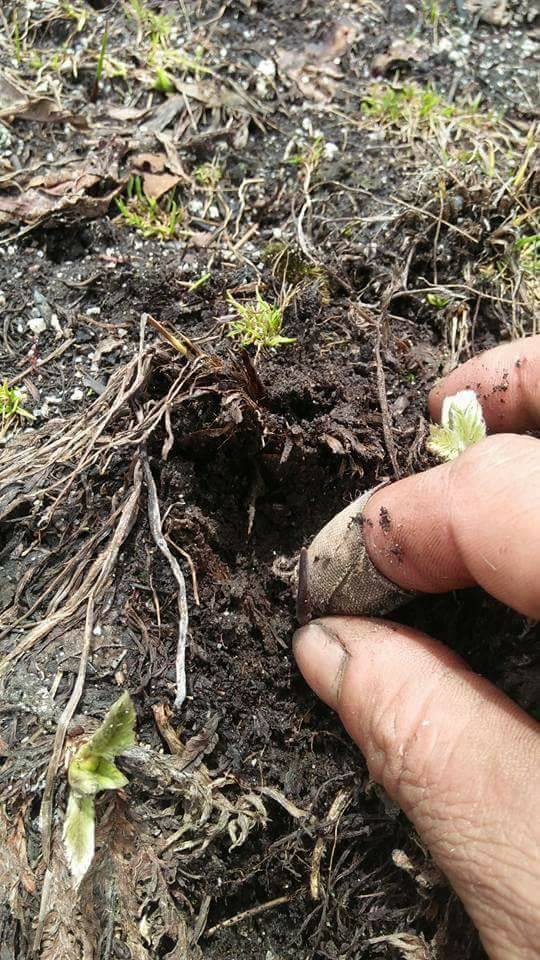
Cordyceps has long been prized in the Far East as a powerful stimulant that can help boost circulation, tone the liver and kidneys, increase physical stamina and of course, help men maintain a erection.
This ability seems to stem from the fungi’s blood vessel dilating properties which leads to better blood flow, especially to the genital areas.A Japanese clinical study has also found that Cordyceps helped 64% of the men who took it for their erectile dysfunction.
Researchers believe that this is due to the presence of deoxyadenosine and corycepic acid in the fungus. Both of these isolated constituents have been shown to help increase libido and desire in both sexes.
Abnormal blood circulation often occurs along with kidney disease. In this condition, cordyceps is a good choice, because it can improve the ability of marrow to produce blood platelets, red blood cells and white cells.
What’s more, the biggest benefit of cordyceps for Chronic Kidney Disease patients is that it can help slow the progress of kidney disease, improve kidney function and reduce kidney damage. Therefore, this herbal medicine is indeed beneficial for most kidney patients.
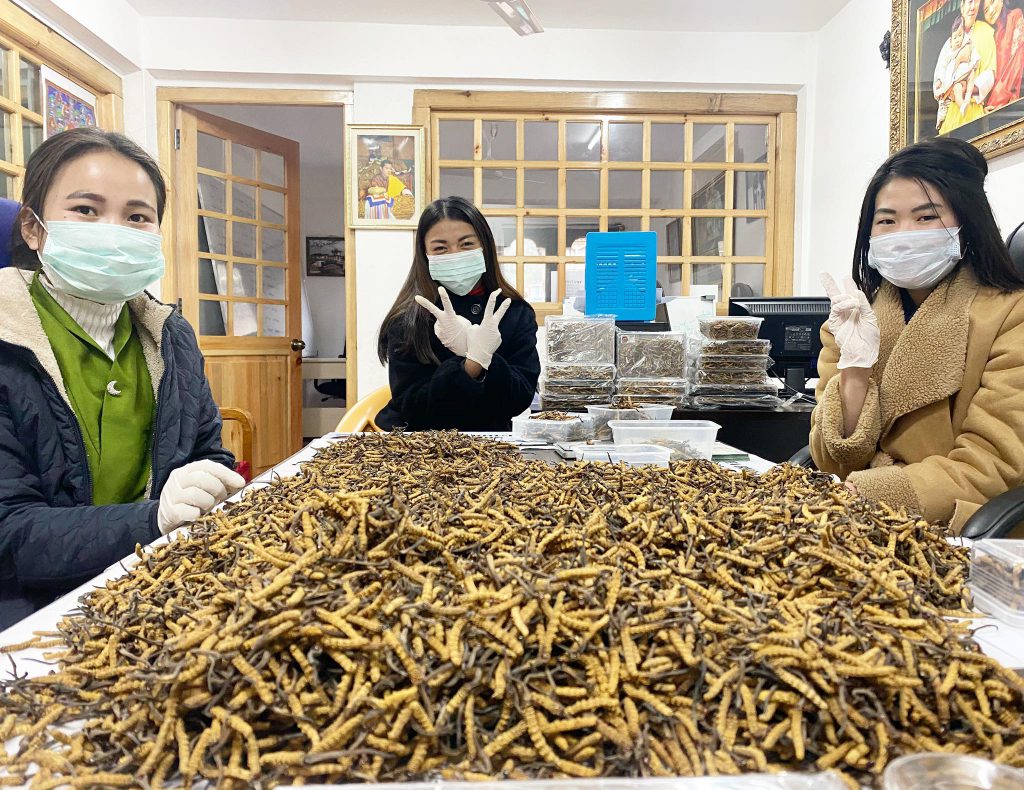
A number of research studies show that Cordyceps has potential for treating heart disease. It is approved in China to treat arrhythmia.
Cordyceps sinensis flaunts a very diverse lin eup of nutrients that have been seen to have a positive effect to the overall function of the circulatory system.
That’s ’cause cordyceps contains a number of nucleosides like deoxyuridine, thymidine, hypoxanthine and adenosine which play a key role in producing energy and enhancing blood flow.
Unpublished data on studies in elderly volunteers revealed increased energy levels and oxygen-carrying capacity following 6 weeks of cordyceps treatment over placebo.
Hepatoprotective effects of cordyceps extracts have been demonstrated in animal models. Open-label clinical studies conducted in patients with active hepatitis and posthepatic cirrhosis reported improvements in liver function tests.
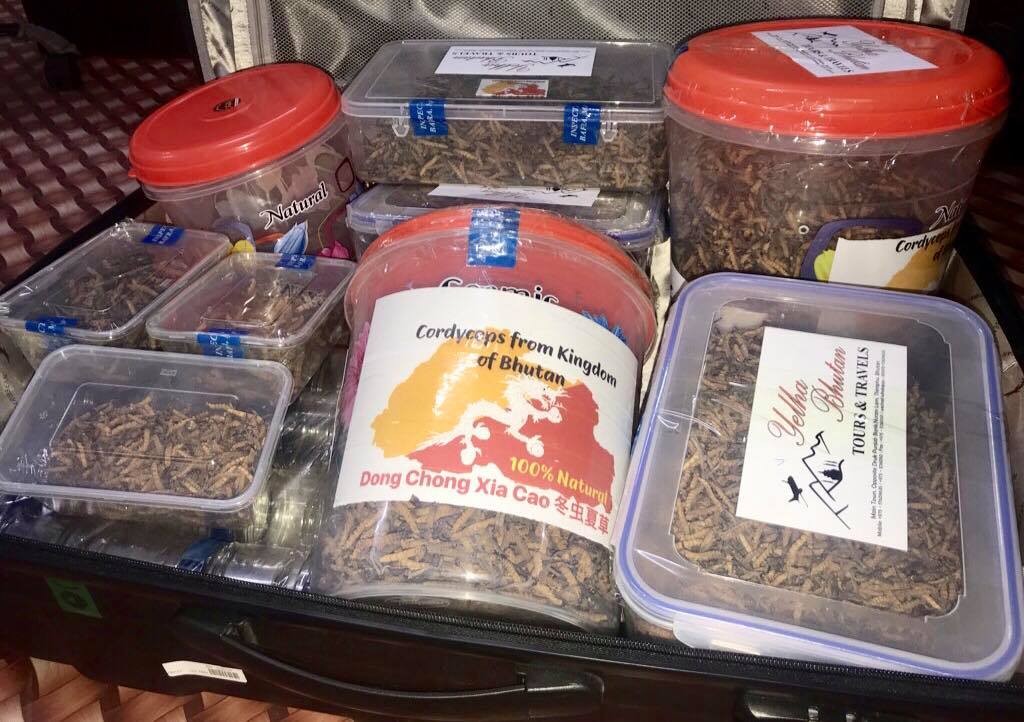
Sinensis have a stimulatory effect on ion transport in human airway epithelial cells, possibly because of cordycepin and adenosine. Animal studies suggest the observed effects on respiration are caused by enhanced oxygen utilization capacity, supporting the traditional use of cordyceps in Tibet and Nepal to offset altitude sickness.
Clinical studies conducted in asthma, chronic obstructive pulmonary disease, and bronchitis have suggested efficacy for cordyceps.
Scientists at the University of Nottingham in Britain have been researching the potential of Cordyceps to reduce inflammation. While their research shows the fungus is effective at reducing inflammation at the cellular level
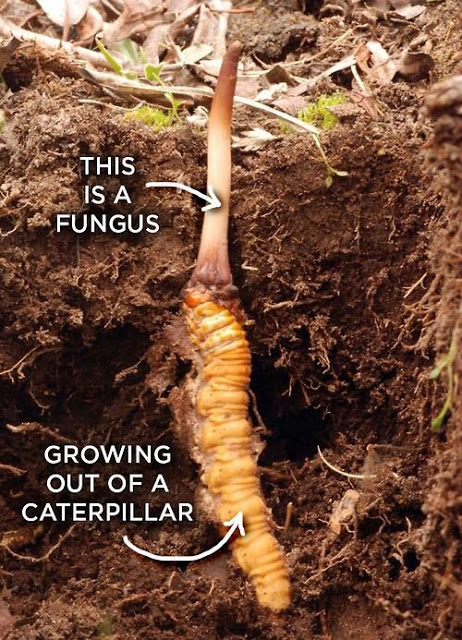
In ancient China this fungus was used exclusively in the Emperor’s Palace because of its scarcity. Approximately 5 grams were stuffed into the stomach of a duck and roasted until well cooked, then the Cordyceps was removed and the duck was slowly eaten, twice daily over a period of 8-10 days, this was thought to be as potent as 50 grams of Panax Ginseng.
The first written record of the Cordyceps mushroom comes from China. In the year 620 AD, at the time of Tang Dynasty (618 AD – 907 AD)
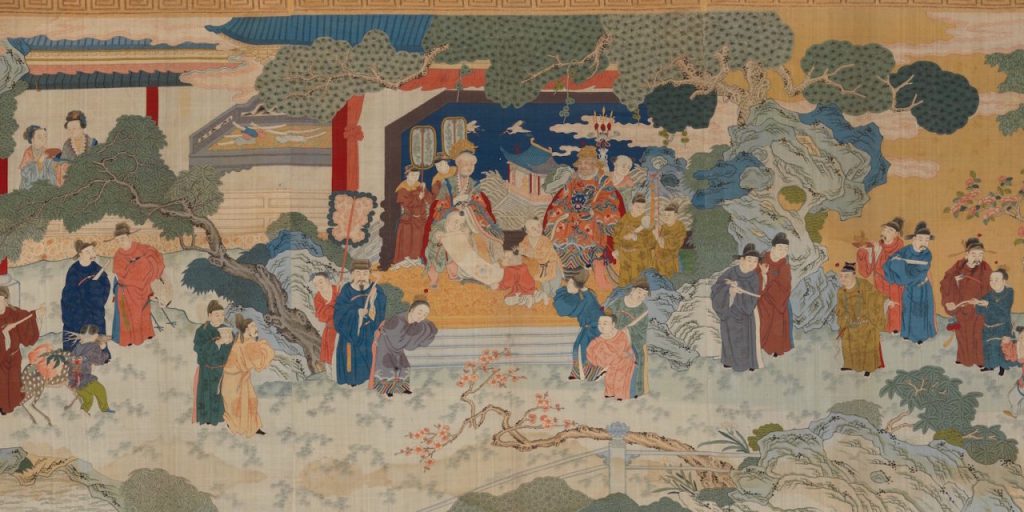
Cordcyeps are foudn in Asia (notably Nepal, China, Japan, Bhutan, Korea, Vietnam, and Thailand). Cordyceps species are particularly abundant and diverse in humid temperate and tropical forests.
Tibetan and Bhutanese cordyceps however are rare, precious and more effective.
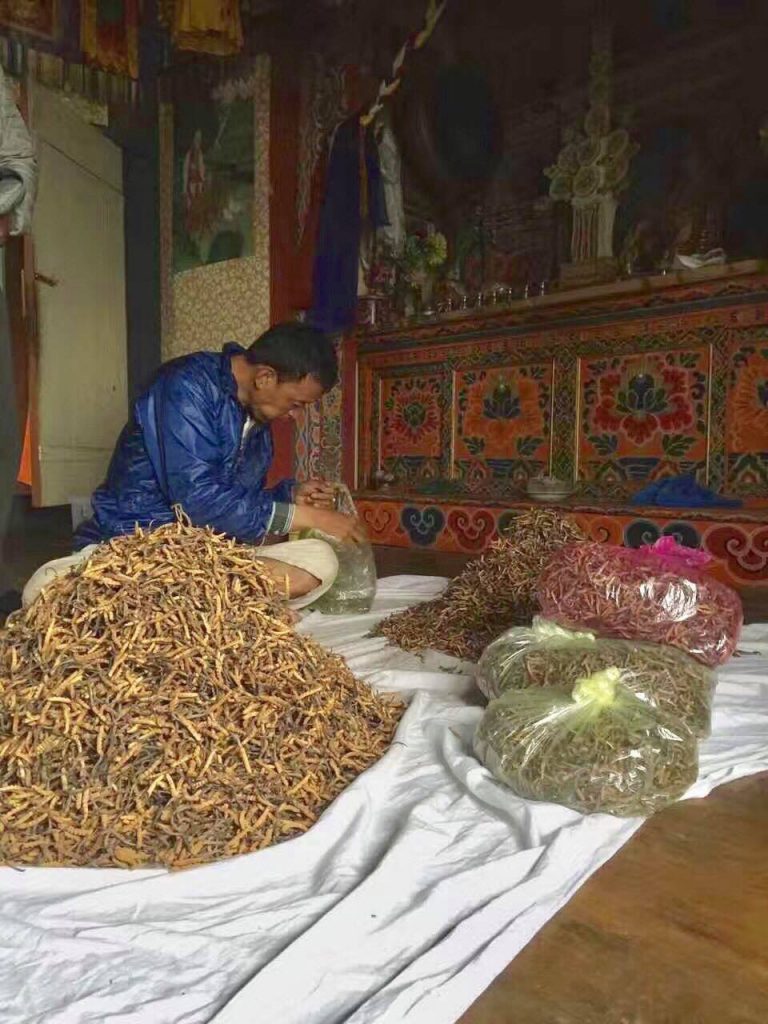
Bhutan cordcyeps are found at an elevation between 14,500 feet and 17,000 feet, just meters below the snow line. It appears annually and is harvested between the months of April and August in Bhutan.
Before the rainy season begins, spores of the Cordyceps mushroom settle on the heads of caterpillars’ that lives underground.
The fungus gets so much into the body of the caterpillars’ that it grows out through its head and drains all the energy from the insect and ultimately it dies.
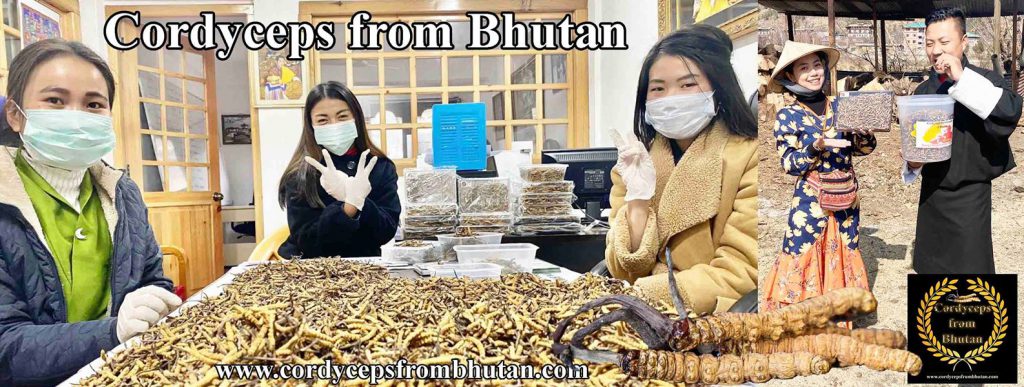
You can easily distinguish, Bhutan’s cordyceps from Tibetan and Chinese via the RED EYES, body color of cordcyeps and line particles shapes in the body.
The cordyceps has a long history in traditional Chinese and Tibetan medicines for its usage in ancient times.
Yet, the cordycep found in the mountains of Bhutan are significant with its Red Eyes serving unique herbal benefits that are not found elsewhere. Also in Bhutan only natural cordcyep are collected mountains from 3500 meters and above and Royal Government of Bhutan is very strict and issues special permits to collect and export cordyces.
Cordcyep from Bhutan are also 100% genuine and very rare.
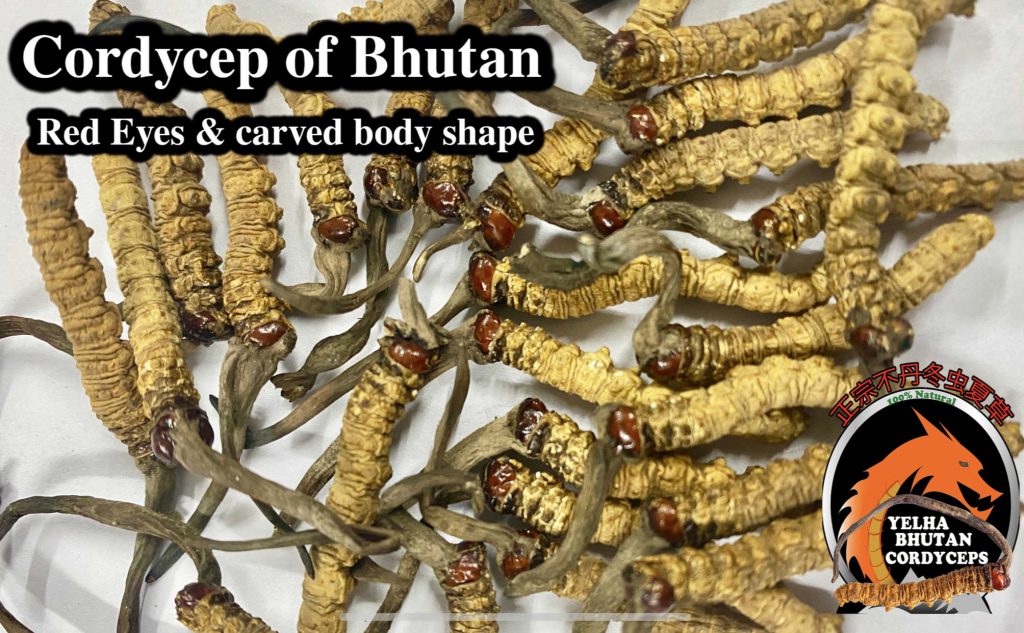
The adenosine Bhutanese infusion of Red Eye Cordycep: 119mg/100g
The adenosine infusion of Tibetean/Chinese Cordycep: 85.5mg/100g
” Adenosine is both a chemical found in many living systems and a medication. As a medication, it is used intravenously to treat certain forms of supraventricular tachycardia that do not improve with vagal maneuvers. ”
The weight and the largeness of the Red Eyes is prized and expensive in Bhutan.
Thus Bhutanese Cordcyeps have extra 33.5mg of adenosine infusion making its almost 33% more effective.
Cordcycep price in 2019 Royal Government of Bhutan, Ministry of Agriculture auction was ‘ the lowest grade D ( dust) US$ 6000 per kg & and the Super A++ size ( 2 pcs in a gram ) 50,000 per kg’
Note: Foreigners are not allowed in the Bhutan Government Cordycep auction, which is held every year on july-August. Only Bhutanese cordycep exporters with special permits are allowed to visit and take part in the auction.
Nga Druk Ga! ” I LOVE BHUTAN; A phrase that completely express my feelings for Bhutan!
Professionalism! A word that concisely summarised Yelha Bhutan Travels!
A trip that precisely how I wanted it to be. They made it for me! Gara lu katrina che! ‘Thank you every one ”
Oh yes… I’m ‘Bhutanised’ �
The happiest people don’t necessarily have the best of everything, they just make the best of everything.🌈😊😁
If you are reading this right now….I hope your day is going well, and if it’s not, I hope it gets better. You are an amazing person who is doing the best they can.😉💪
Keep up the hard work and never give up.😉😄☘️
It’s one of my best trips ever. The scenery is beautiful. Everyone is really attentive to our needs and very friendly.
We met their other Singaporean ladies group for cultural night and had a good time with them.
I highly recommend this travel agency. After this trip, they are not our guides, they are our friends from Bhutan !
February- Testimonial from our Italian clients. Bhutan 8 days tour.
1. Guide:
Sangay has been an excellent guide, He managed to let us experience the local cultural, religion and habits., without him we would have enjoyed half the experience. .More then a guide he has been a travel mate a friend for us.
2. Guide and transport .
All transport have been taken care if skillfully, No disturbance or car sickness what so ever as far as possible. with roads . Drives have ben enjoyed.
3. Food/Meals.
Food was fresh, used the local products you can also see in the market. Choice of dish was wide and abundant. with local specializes and without spicy product.
4. Hotel./accommodations.
Friendly staffs, always ready to help. Professional and nice resorts.